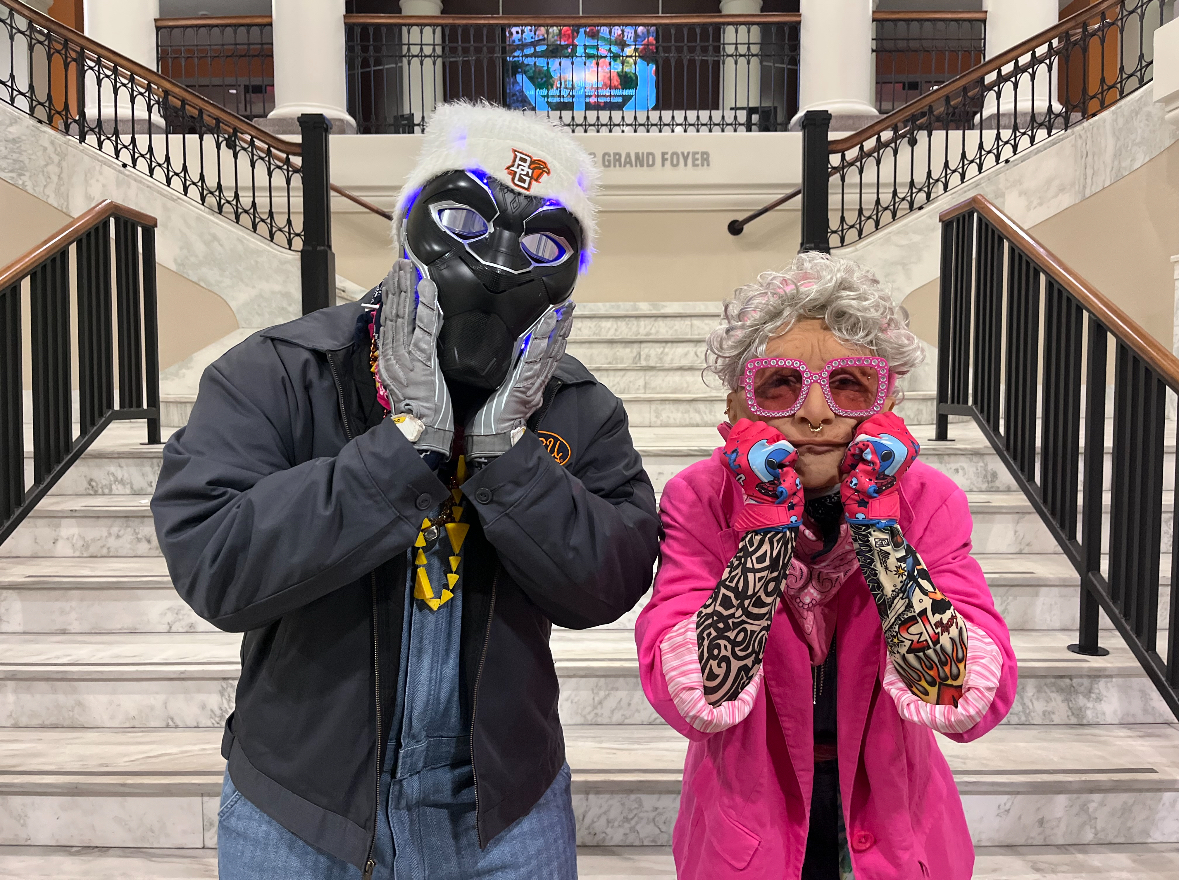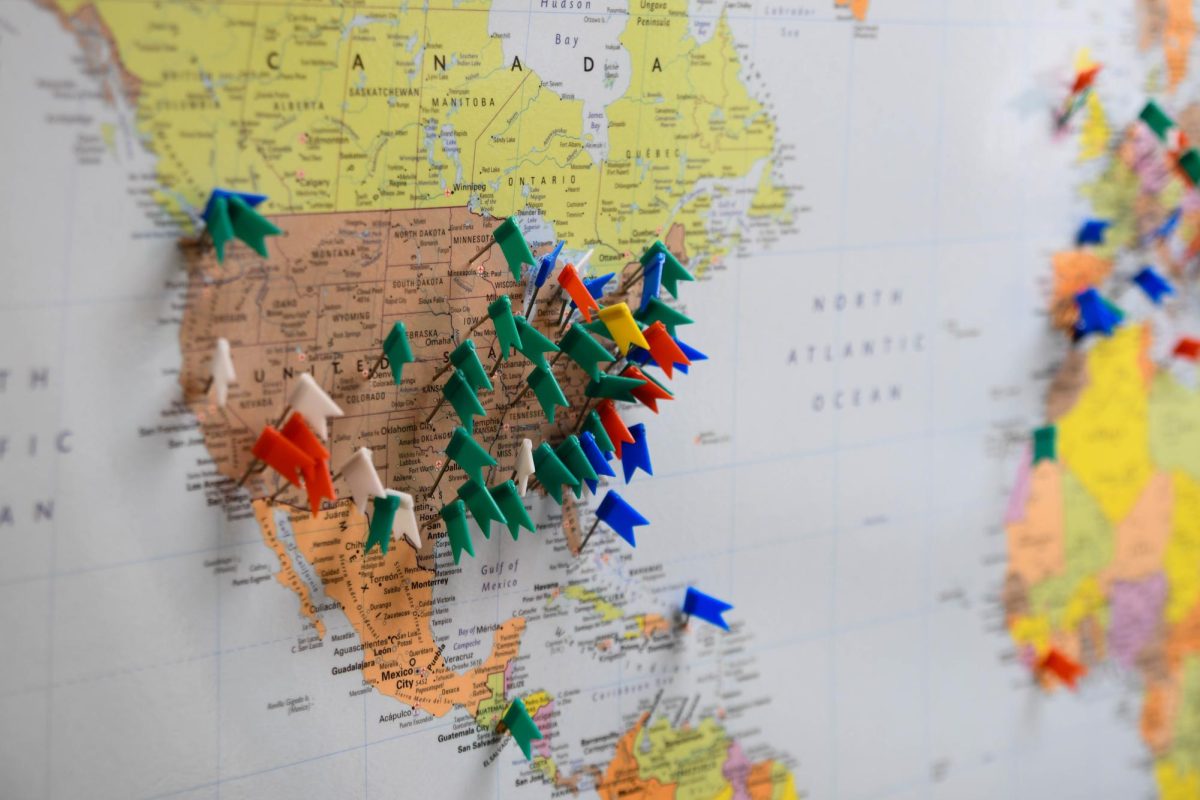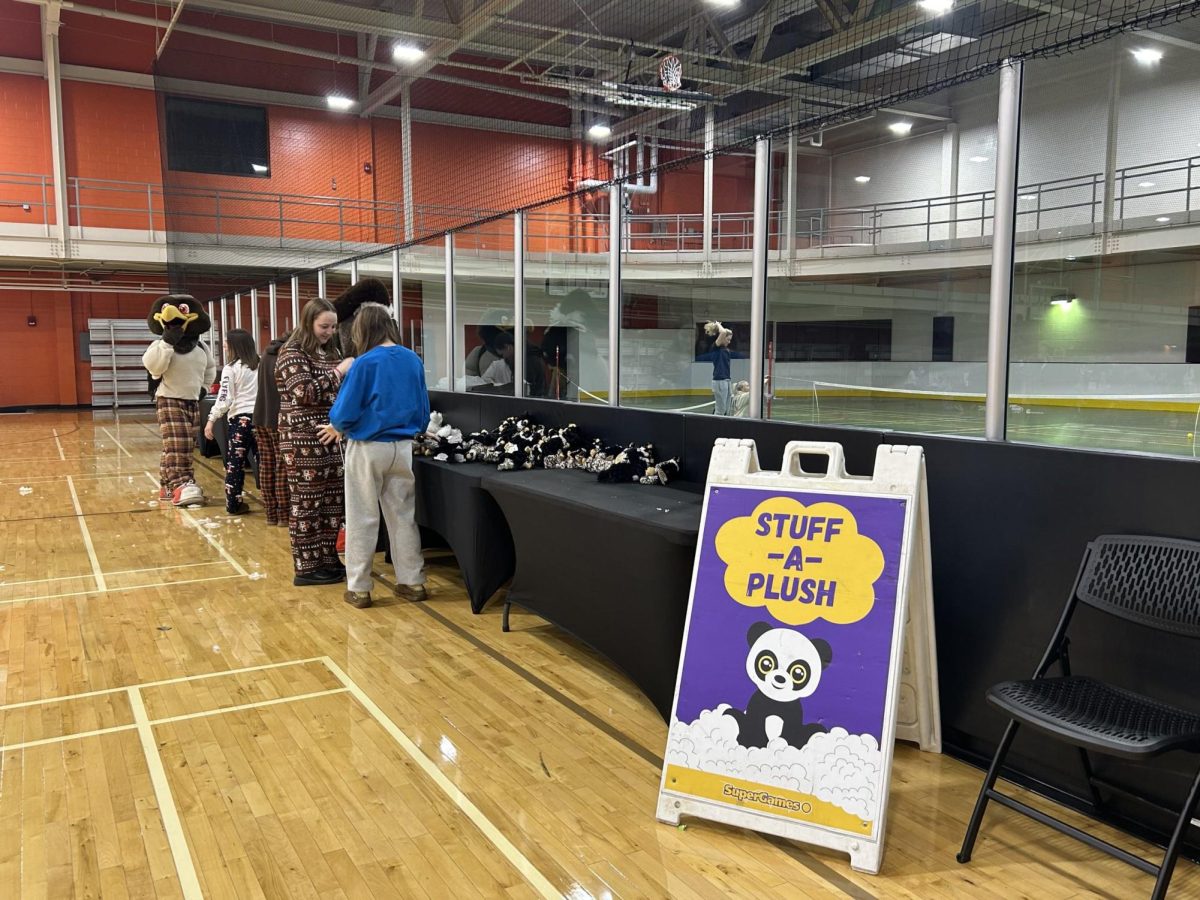Emanuel Enriquez has left his stamp on campus with two sculptures, leaving students speculating about their messages.
The first of his abstract stone sculptures is ‘Metamorphosis’ and is located on the southwest end of campus between the Union and McFall Center, right near the University seal.
He donated the sculpture to the University in 2003 and said it symbolizes the evolution of the University student.
‘It relates to the University students, who come in as freshmen – inexperienced,’ Enriquez said. ‘And hopefully they leave and transform from a freshman into a fruitful person in society.’
The plaque under the sculpture reads: ‘Through life’s transforming experiences we learn the value of contributing to society.’
Enriquez received his Bachelor of Fine Arts in painting from the University in 1978 after finishing a tour in Vietnam.
In 2000, he received his Master of Fine Arts in sculpture from the University after retiring as a full-time employee at the Chrysler plant in Perrysburg.
Women have a strong presence in Enriquez’s sculptures on campus and his master’s thesis was about the strength of women.
‘My art is my way of honoring women and mothers,’ Enriquez said.
In an excerpt from his master’s thesis, Enriquez describes why womanhood is an important component of his art.
‘It is my belief that the women play the strongest role in nurturing and holding the family and society together,’ he said. ‘It is because of this commitment and loyalty to the family that I have chosen women as the subject of my sculptures.’
While art is open to interpretation, Sophomore Brittany Mullins said most students see ‘Metamorphosis’ as a vagina.
‘Is that the one everyone calls the vagina rock?’ Mullins said when asked about ‘Metamorphosis.’
Sophomore Casey Toney said he thinks he knows what the sculpture means but that students are positive it is a vagina.
‘It’s supposed to be like a chrysalis or whatever, but I think the campus has unanimously decided that it is in fact a vagina,’ Toney said.
Many students on campus have noticed the sculpture’s resemblance to a vagina, which Enriquez said was intended but is not the main thing he wants students to think of when they see it.
‘I’ve heard that, and it’s somewhat correct, but not the primary idea I wanted people to have of it,’ Enriquez said.
He originally planned on putting a bronze sculpture of himself in the sculpture’s cavity, but decided not to because he wants students to imagine themselves in that position.
Enriquez described the meaning behind the shape of the sculpture and said it is symbolic of the life cycle.
‘The cavity represents the womb and its warmth and shelter,’ Enriquez said. ‘And at the end of your life you find yourself in a coffin, and the shape is similar to that. What is important is what you do in between those two stages; what is contributed to society.’
In Jerome Library, his sculpture ‘Fruition’ can be found on the staircase leading to the second floor.
‘Fruition’ is another abstract piece of Enriquez’s art that honors women.
‘It symbolizes the coming of age of womanhood and the flowering of life,’ he said. ‘Like ‘Metamorphosis’, it is about the evolution of the human experience.’
Enriquez said he found his inspiration for both sculptures while walking on the beaches of South America.
‘I looked at a seashell and it had a beautiful design,’ Enriquez said. ‘The seashell is the home of sea creatures just like the womb or vagina is a home and shelter at the beginning of life.’
Rebecca Ferguson, assistant vice president of human resources at the University, purchased ‘Fruition’ and then donated it to Jerome Library after learning that the library had made a request to purchase it.
‘It is a very stark and stunning piece,’ Ferguson said. ‘If you touch it, it is very sensual and tactile.’
Ferguson said Enriquez had explained what ‘Fruition’ represented shortly after she purchased it years ago, but can’t remember what he said.
What matters is each person’s own interpretation of art, Ferguson said.
‘The one thing I love about art is what I see is not what you will see,’ she said. ‘Everyone will get something different out of it.’
Enriquez made another sculpture based on the same concept as ‘Fruition’ called ‘Fruition II,’ which he sold to a business owner in Toledo.
‘It is a different color stone, but based on the same design as the one in Jerome Library,’ Enriquez said. ‘I like to see what else I can do with the same idea. It is like the woman and child image used in art by all cultures, but everyone puts a different twist on it.’
One of his best-known pieces is a bronze sculpture that is on display at the home of the Toledo Mud Hens, Fifth-Third Field.
Outside the stadium on St. Clair Street is ‘Who’s Up?,’ which depicts kids looking through holes in a fence from beyond the home run wall to watch the game.







